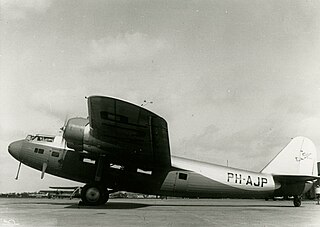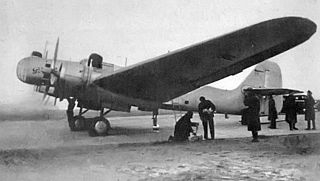
The Ikarus Aero 2 was a piston-engined military trainer aircraft built in Yugoslavia in the years following World War II, although the design pre-dated the war.

A partwork is a written publication released as a series of planned magazine-like issues over a period of time. Issues are typically released on a weekly, fortnightly or monthly basis, and often a completed set is designed to form a reference work on a particular topic.

Airliner World is an aviation magazine published by Key Publishing in Stamford, Lincolnshire, England. In the United States, the magazine is distributed from Key Publishing office in Avenel, New Jersey.

Ian Allan Publishing was an English publisher, established in 1942, which specialised in transport books. It was founded by Ian Allan.
The Division of Military Aeronautics was the name of the aviation organization of the United States Army for a four-day period during World War I. It was created by a reorganization by the War Department of the Aviation Section, U.S. Signal Corps on April 24, 1918, still as part of the Signal Corps. It was removed from the Aviation Section by executive order on May 20, 1918, and existed as the sole Army aviation agency until a War Department general order issued May 24, 1918, established it and the Bureau of Aircraft Production, created by the same reorganization on April 24, as coordinate components of the "Air Service". As such, it is recognized by the United States Air Force as the third of its antecedents.

Man, Myth & Magic: An Illustrated Encyclopedia of the Supernatural is an encyclopedia of the supernatural, including magic, mythology and religion. It was edited by Richard Cavendish. The art director was Brian Innes, former percussionist of surrealistic 1960s band The Temperance Seven.

The Spartan Cruiser was a 1930s British three-engined transport monoplane for 6 to 10 passengers built by Spartan Aircraft Limited at East Cowes, Isle of Wight. It was a development of the Saro-Percival Mailplane for passenger use.

Air Enthusiast was a British, bi-monthly, aviation magazine, published by the Key Publishing group. Initially begun in 1974 as Air Enthusiast Quarterly, the magazine was conceived as a historical adjunct to Air International magazine. Air International was involved with current aviation topics and the Quarterly concerned itself with historical matters.

The Fokker F.XX was a 1930s Dutch three-engined airliner designed and built by Fokker. It was the first Fokker design to use an elliptical-section fuselage instead of the traditional square fuselage and the first Fokker aircraft with retractable landing gear.

The Fokker F.XXII was a 1930s Dutch four-engined 22-passenger airliner designed and built by Fokker.

The Fokker F.XXXVI was a 1930s Dutch four-engined 32-passenger airliner designed and built by Fokker. It was the largest transport designed and built by Fokker. Only one was built, and it was used for some commercial routes starting in 1935, and later aviation training by the British Royal Air Force until 1940.

The Savoia-Marchetti S.59 was a 1920s Italian reconnaissance/bomber flying boat designed and built by Savoia-Marchetti for the Regia Aeronautica.
Orbis Publishing Ltd. was a United Kingdom-based publisher of books and partworks.

The Hanriot HD.32 was a military trainer aircraft built in France in the 1920s. Derived from the HD.14 and sharing the same basic configuration as it, the HD.32 was a substantially revised design, with redesigned tailplane, undercarriage, and wings of shorter span. The HD.14's wooden construction was replaced in part with metal structure.
Wings was a military aviation history magazine published in the United States between 1971 and 2007. The magazine featured articles and photo features covering military aviation from World War I to the modern era, focusing heavily on American aircraft.

The Boeing AT-15 was an American twin-engined bomber crew trainer designed and built by Boeing's Wichita Division. Only two prototypes, designated XAT-15, were built. Plans to build over 1,000 were cancelled on the United States' entry into the Second World War.
World Aircraft Information Files(WAIF) is a weekly partwork magazine published by Bright Star Publications (part of Midsummer Books) in the United Kingdom. Each issue was priced at £1.70 for issues 1–163, and £1.80 for issues 164–218. Altogether, there were 218 issues in the complete set, which completed in 2002. Originally advertised as having 200 issues, the run was extended to 218 issues when approximately 576 pages were missing from the collection. An index to the complete series was given in the final issue.

The Doblhoff/WNF 342 was an early experimental tip jet helicopter designed and produced by Wiener-Neustädter Flugzeugwerke. It was the first helicopter to take off and land using tip jets to drive the rotor.

The Tupolev ANT-37 was a Soviet twin-engined long-range bomber designed and built by the Tupolev design bureau, the design team operating under the guidance of Pavel Sukhoi. The aircraft did not enter production, but three examples of the type were used for research and record breaking flights.
World Air Power Journal was a quarterly aviation magazine concentrating on modern military aviation in the period 1989 to 2000. The contents included news, military air operations, new aircraft briefings, air forces analysis and photo features and in-depth articles about particular aircraft types - usually presented in great detail, and with lavish illustration, including a gatefold centrefold with airbrushed artwork and cutaway drawings. The editors' philosophy was to include an article on a "focus aircraft" that would effectively serve as a monographic book on that subject - often running over more than 50 of the magazine’s 160 pages.















